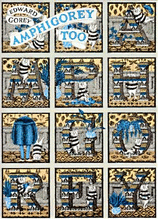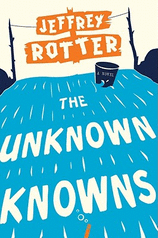
The current featured contributor to
Writers Read: Christopher Conlon, author of three books of poems, two collections of stories, and a novel,
Midnight on Mourn Street, which has been nominated for the Bram Stoker Award in the category of Superior Achievement in a First Novel.
He has also edited several books, including
Poe's Lighthouse and
He Is Legend: An Anthology Celebrating Richard Matheson.
An excerpt from his entry:
There are four books currently on my coffee table. (Though since I don't drink coffee, it's really a tea table.)
....
 [T]wo in the stack, Endpoint and Collected Poems, are both by John Updike, a writer whose work has never, until recently, done much for me. I used to read his short stories when they appeared in The New Yorker, but rarely found myself affected by them; a couple of stabs at his novels left me cold. But in the past couple of years Updike published in various magazines some poems which, I was surprised to discover, moved me; so when I saw his latest (and last) verse collection in a bookstore, Endpoint, I picked it up--and promptly fell in love with the urbane tone, the gentle melancholy, the witty language. It inspired me to also get his Collected Poems, and reading through it has confirmed to me that Updike was, and is, woefully undervalued as a poet....[read on]
[T]wo in the stack, Endpoint and Collected Poems, are both by John Updike, a writer whose work has never, until recently, done much for me. I used to read his short stories when they appeared in The New Yorker, but rarely found myself affected by them; a couple of stabs at his novels left me cold. But in the past couple of years Updike published in various magazines some poems which, I was surprised to discover, moved me; so when I saw his latest (and last) verse collection in a bookstore, Endpoint, I picked it up--and promptly fell in love with the urbane tone, the gentle melancholy, the witty language. It inspired me to also get his Collected Poems, and reading through it has confirmed to me that Updike was, and is, woefully undervalued as a poet....[read on]
Visit
Christopher Conlon's website and
blog.
Writers Read: Christopher Conlon.
--Marshal Zeringue


















































